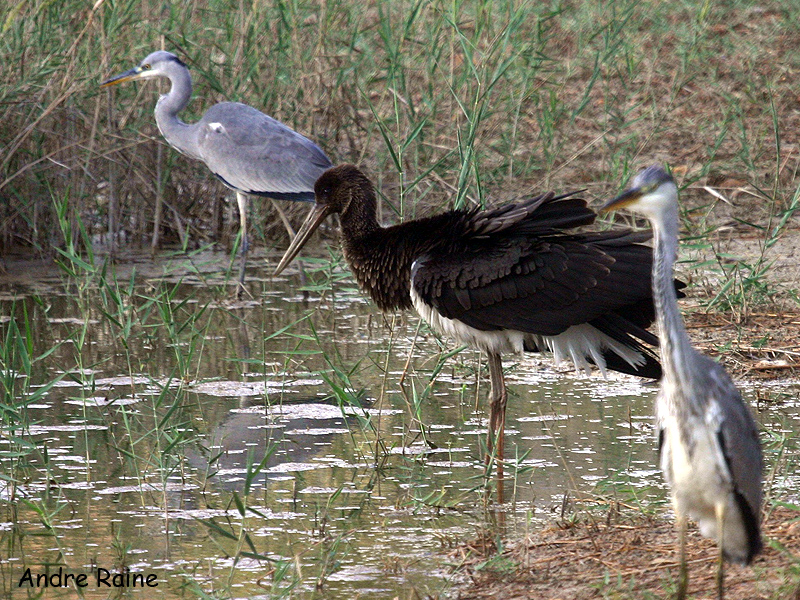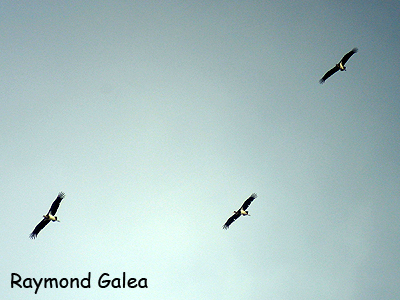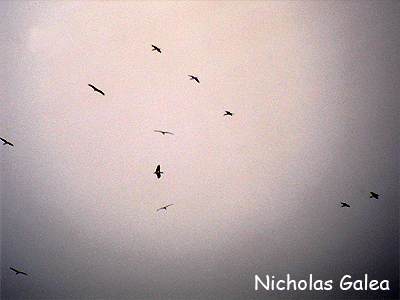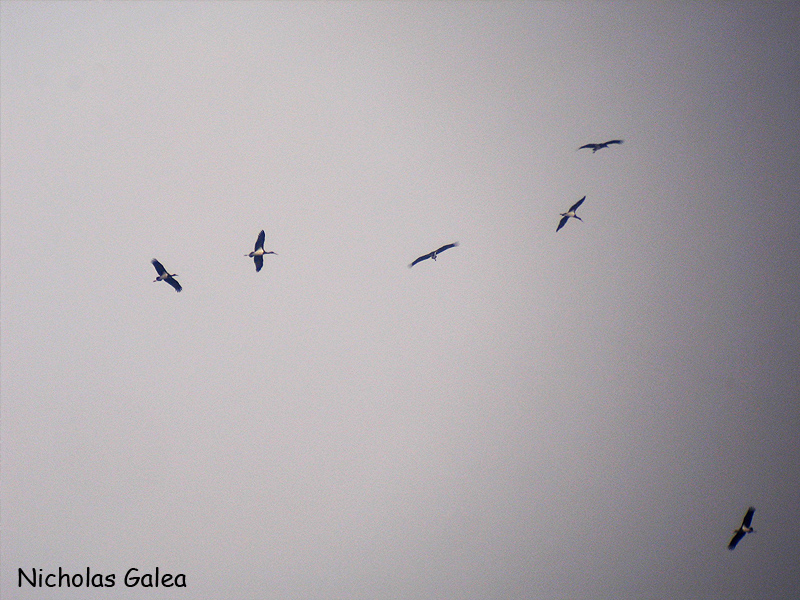Black Stork
Scientific Name: Ciconia nigraMaltese Name: Cikonja Sewda
Family: Herons, Storks and Ibises (Ciconiiformes)
Occurence: Rare
Breeds in Malta: No
Overview:
The Black Stork is a graceful bird of European forest and coniferous woodland. It is bigger than the Grey Heron. It has a black neck, chest and wings which distinguish it from the popular White Stork. From below, white only on underbody and wing pits. Its neck is extended in flight. It has a red bill and legs. Seen up close, it has a glossy greenish-black back. It is a European summer visitor and winters in Africa. Feeds mainly on insects and amphibians. The Black Stork is a shy bird and doesn't migrate in large numbers like the White Stork. It nests in deep forests, well hidden in a tree or cliff ledge.
Status:
The Black Stork is a rare bird but in recent years more individuals are being recorded especially in mid-September.
On 3rd October 2007 4 Black Storks roosted at Buskett and left early the next morning.
On 23rd September 2008, a record flock of 12 birds were sighted at Gozo. The birds roosted in Maltese countryside. Shamefully, of the twelve birds 3 were observed shot down, 4 were seen safely leaving the islands, another 2 were reported shot down and the fate of the other 3 is unknown. Unfortunately Black Storks are one of the rarest but most prized birds sought to be killed by poachers.
On 24th Spetmeber 2009 a Juvenile Black Stork spent some time feeding inside Simar Nature Reserve
When to See:
Autumn mid-September and early October while Spring April - May. It is more common in autumn than in spring.
Where to See:
From Buskett in autumn a few individuals are sighted every year. Other high areas like Dwejra, Dingli and Gharghur are good places. Can be seen flying over from anywhere.
Photographs:
 |
Juvenile Black Stork, 24th September 2009, Simar Nature Reserve |
 |
 |
| 3 (of 4) Black Storks, 2nd October 2007, Buskett | 11 Black Storks, 23rd September 2008, Buskett |
 |
6 (of 11) Black Storks, 23rd September 2008, Buskett |
Back to Bird Species List